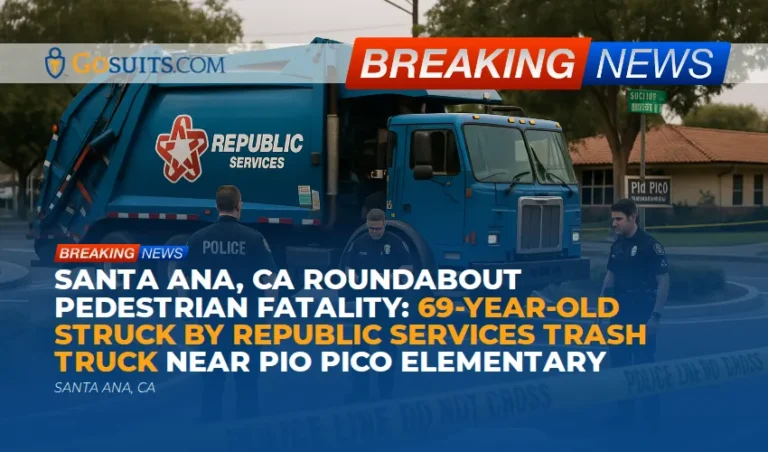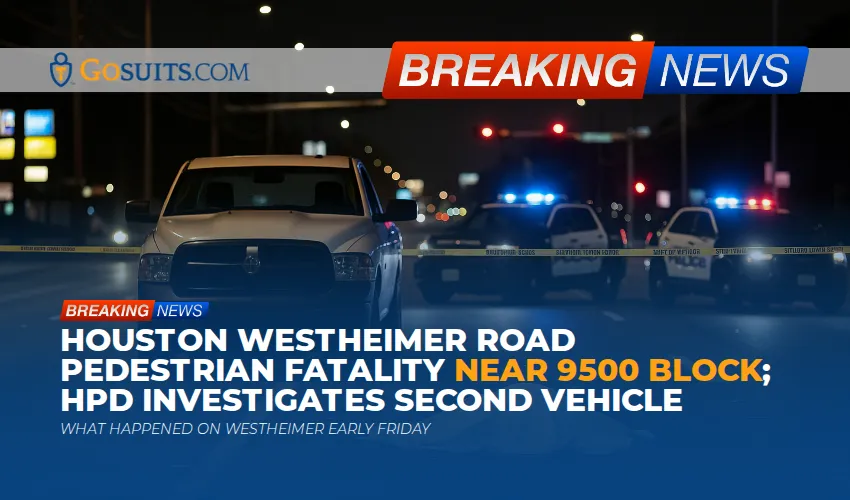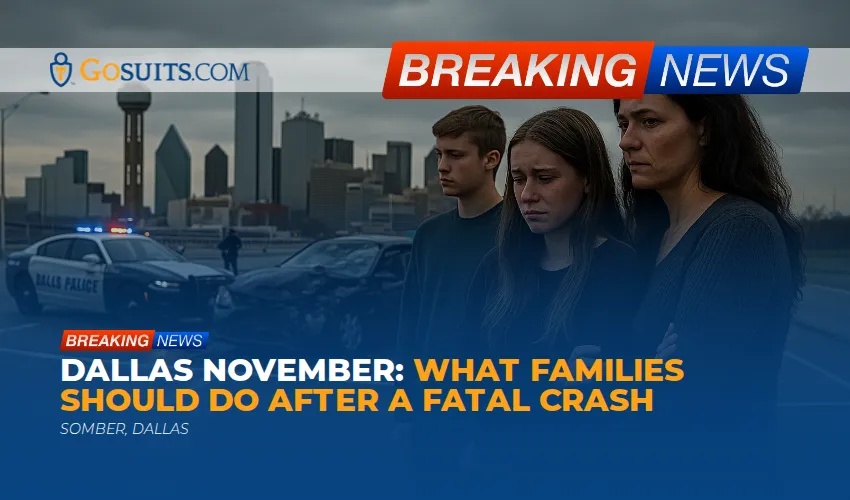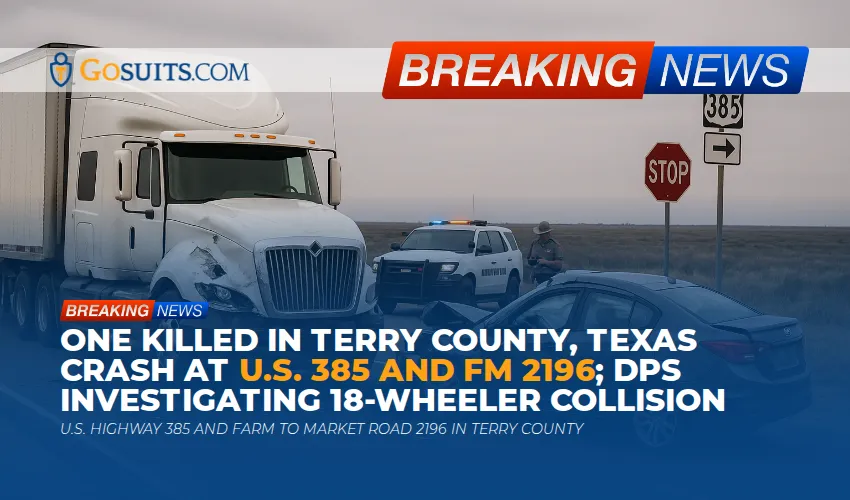- What We Know About the Santa Ana Roundabout Fatality
- Where the Investigation Stands and Who Is Involved
- Why Right-Turning Trucks Pose Unique Dangers to Pedestrians
- Roundabouts and Pedestrian Safety in Urban Neighborhoods
- Pedestrian Rights and Driver Duties Under California Law
- Potential Civil Liability Paths After a Fatal Commercial Truck-Pedestrian Collision
- What Families Can Do in the First Days and Weeks
- Evidence That Often Matters in Waste Truck Collisions
- Insurance and Damages Considerations
- Community Safety Considerations Near Santa Ana Schools
- How to Follow Official Updates
- Commentary from Gosuits Santa Ana, California Personal Injury Attorney
- Time-sensitive Steps People Can Take Now
- Sources
What We Know About the Santa Ana Roundabout Fatality
On the morning of Wednesday, November 19, at around 7:56 a.m., a 69-year-old pedestrian was struck and killed at the roundabout near Shelton Street and Bishop Street in Santa Ana. According to information released by the Santa Ana Police Department, a Republic Services trash truck was traveling east on Bishop and made a right turn onto South Shelton. During that turn, the truck struck a woman who was crossing the street. Orange County Fire Authority personnel arrived and pronounced her deceased at the scene. Authorities later identified her as Maria Rubalcava de Ruesga of Santa Ana. The driver stayed at the location and cooperated with investigators.
The collision occurred near Pio Pico Elementary School while families and children were in the area. Santa Ana Unified School District activated a crisis team to support the school community. Police asked anyone with information to contact Detective K. Catlin at 714-245-8224 or the Santa Ana Police Department Traffic Division at 714-245-8200.
Neighbors around Shelton and Bishop know how lively those streets get during school mornings. It is a close-knit area where pedestrians, parents with strollers, and students walking to class share the roadway environment with service vehicles and commuters. The shock of a fatality at a neighborhood roundabout is felt not just by one family, but across the community.
Where the Investigation Stands and Who Is Involved
Santa Ana Police Department is leading the collision investigation. The initial account indicates the trash truck was making a right turn at the roundabout at the time of impact. That preliminary detail will be tested against physical evidence, vehicle data, scene measurements, and witness statements. OCFA handled emergency response and pronounced the victim at the scene.
Republic Services is a private waste-hauling company that provides municipal service. In serious incidents like this, commercial carriers commonly initiate internal reviews and notify their insurers. Investigators may look at driver training records, route schedules, truck inspection logs, and any onboard camera or telematics data to reconstruct what happened.
While the driver’s cooperation is noted, fault is not determined by cooperation alone. It rests on objective evidence, applicable roadway rules, vehicle operation, and pedestrian right-of-way considerations.
Why Right-Turning Trucks Pose Unique Dangers to Pedestrians
Large refuse trucks share traits with other heavy commercial vehicles. They sit high, have long wheelbases, require wider turn paths, and carry significant blind spots alongside and to the front of the cab. The Federal Motor Carrier Safety Administration has long warned that large trucks have “No-Zones” where pedestrians and bicyclists can be momentarily hidden from a driver’s view. When a truck makes a right turn, the combination of mirror limitations, vehicle pivot, and trailer or rear body swing can create conflict points with people in crosswalks or stepping off a curb. See FMCSA’s guidance on large-truck blind spots and stopping distances for background at FMCSA.
Stopping distance is another factor. A heavy truck traveling at a modest urban speed still needs more distance to stop than a passenger car. If a pedestrian emerges from a blind spot during a turn, reaction time and stopping distance compress into a split-second. Add the common bustle of a school-area morning and the risk compounds. None of this explains away fault, but it helps the public understand why investigators scrutinize turning paths, vehicle positioning, and line-of-sight at the exact moment of the collision.
Roundabouts and Pedestrian Safety in Urban Neighborhoods
Roundabouts are designed to lower vehicle speeds and reduce severe crashes compared with traditional stop-controlled intersections. The Federal Highway Administration has documented substantial reductions in injury crashes where roundabouts replace two-way or all-way stop control. For a high-level overview, see FHWA’s intersection safety resources on roundabouts at FHWA.
For pedestrians, the benefits of roundabouts come when crosswalks are set back from the circulating roadway, splitter islands offer a refuge, and drivers approach at slow speeds. Still, conflicts can occur if a pedestrian is in the crosswalk while a large vehicle is turning, if sight lines are constrained, or if road users are unfamiliar with yielding patterns at neighborhood traffic circles. In Santa Ana’s residential pockets, many community circles and roundabouts calm traffic, but maintaining clear markings, visibility, and daylighted corners remains important, especially near schools like Pio Pico Elementary.
Pedestrian Rights and Driver Duties Under California Law
California statutes establish a careful balance of duties. Drivers must yield the right-of-way to pedestrians crossing within any marked crosswalk or within an unmarked crosswalk at an intersection. The rule appears in California Vehicle Code section 21950. Pedestrians also have a duty of care for their own safety. The statute and a summary are available from the Legislature at CVC 21950.
When turning, drivers must ensure that a movement can be made with reasonable safety and must signal appropriately. This duty applies to right turns at intersections and roundabouts alike. See CVC 22107. California’s Basic Speed Law also requires drivers to operate at a speed that is reasonable and prudent under the conditions, considering potential hazards and roadway users such as pedestrians. See CVC 22350.
These rules matter in civil cases because they help define the standard of care. Whether this specific driver or company violated any statute or duty is a factual question for investigators and, later, for insurers or a civil court if claims are filed.
Potential Civil Liability Paths After a Fatal Commercial Truck-Pedestrian Collision
When a commercial vehicle strikes a pedestrian, several legal theories may come into play. These are general concepts and not case-specific conclusions.
- Driver negligence — Did the driver fail to yield, make an unsafe turn, or drive at a speed unsafe for conditions. Evidence includes turn angle, approach speed, and compliance with traffic control and crosswalks.
- Employer responsibility — Employers can be responsible for the acts of their employees within the course and scope of employment under respondeat superior. For waste-hauling services, route driving during work hours typically falls within that scope.
- Vehicle maintenance and equipment — If mirrors, cameras, sensors, or brakes were out of spec and contributed to the collision, maintenance practices and inspection records are scrutinized.
- Roadway design or control — If a claim alleges a dangerous condition of public property like inadequate sight distance, missing signage, or crosswalk placement issues, separate procedures apply. California’s Government Claims Act generally requires a written claim to a public entity within six months of the incident date before a lawsuit can be filed. See Gov. Code 911.2.
In any serious injury or wrongful death case, determining who is legally responsible rests on the evidence. Families considering civil claims often benefit from early counsel to protect their rights while the investigation is ongoing.
What Families Can Do in the First Days and Weeks
Each situation is different, but these practical steps can help keep information organized and preserve critical evidence.
- Get the incident report number — If you spoke with Santa Ana Police officers at the scene or later, ask for the report number and the investigating officer’s name. Keep a photo of any business card provided.
- Request official records — Collision reports are typically available through the investigating agency’s records unit after processing. Ask Santa Ana Police Department’s Records or Traffic Division how and when the report can be requested. Expect identification and proof of relationship requirements in a fatality.
- Check coroner case status — In Orange County, the Sheriff-Coroner’s Office manages examinations and determines manner and cause of death. Family members can inquire about a coroner case and later request reports and findings. See the Coroner Division page at Orange County Sheriff-Coroner.
- Obtain death certificates — Certified death certificates are necessary for many administrative tasks. The California Department of Public Health maintains statewide guidance on ordering vital records at CDPH Vital Records.
- Collect your own evidence — Save the shoes, clothing, or personal items that were with the pedestrian, any photos of the scene, and messages from witnesses. Note the exact time you learned of the incident.
- Identify potential witnesses and nearby cameras — Write down names of anyone who saw the collision. In a school zone, ask the school office if cameras capture street approaches during morning arrival. Doorbell cameras in the area can be invaluable.
- Keep insurance and billing documents in one folder — Funeral bills, memorial service costs, and any life insurance communications should be organized. Make copies for later claim submissions.
- Talk with a qualified attorney before speaking to insurance companies — Commercial carriers and their insurers often reach out quickly. What’s said to an adjuster can be used later. A free consultation helps clarify rights and next steps before any recorded statement.

Evidence That Often Matters in Waste Truck Collisions
Heavy-vehicle cases depend on details. Much of the key information is in the possession of the company or public agencies and can disappear with time. These are common categories of evidence that can make a difference.
- Onboard video and telematics — Many modern refuse trucks carry forward-facing and side cameras, plus telematics that record speed, braking, and turn signals. Prompt written preservation requests can help ensure this data is not overwritten.
- Driver route sheets and dispatch logs — Daily routes, stops, and time stamps show where the truck was and why it was turning at that location at that moment.
- Inspection and maintenance records — Pre-trip and post-trip inspection checklists, repair histories, and any reported mirror or camera issues are key.
- Vehicle download and ECM data — Engine control modules can record speed and brake application. Specialized downloads may be required.
- Police scene documentation — Measurements, diagrams, drone images, and total station maps from the police investigation anchor later analysis.
- Third-party video — School, city, or private security cameras often see approach paths to a roundabout or crosswalk. Footage can be overwritten within days.
- Physical evidence at the scene — Crosswalk markings, tire marks, debris fields, and sight lines where vegetation or parked vehicles may have narrowed views.
Because companies control much of the data, timely preservation letters and, if needed, court orders can be critical. An attorney can help move quickly to secure this material.
Insurance and Damages Considerations
Commercial waste-hauling trucks are generally insured under commercial auto policies, often with significant limits and sometimes with excess or umbrella coverage. When a fatality occurs, an insurer may open a claim immediately and assign a seasoned adjuster and defense team.
Damages in a wrongful death action in California typically include the economic value of financial support the decedent would have provided and certain non-economic damages like loss of companionship. A separate survival claim allows the decedent’s estate to seek certain losses that the decedent suffered before death, which may include pain and suffering under current law. See California Code of Civil Procedure section 377.34 at CCP 377.34.
Timing also matters. California’s general statute of limitations for wrongful death is two years from the date of death. See CCP 335.1. If a public entity is a potential defendant for a dangerous condition of public property, a government claim typically must be presented within six months of the incident. See Gov. Code 911.2. These are general rules and can have exceptions or special circumstances.
If an insurer reaches out for a statement or to discuss settlement, consider consulting an attorney first. Statements given early can shape the claim record. It is reasonable to ask any insurer to put communications in writing while legal counsel is being considered.
Community Safety Considerations Near Santa Ana Schools
Morning arrival around Pio Pico Elementary is a familiar routine in Santa Ana. Families on foot, kids on scooters, and service vehicles like trash collection trucks all converge on neighborhood streets. The federal Safe Transportation for Every Pedestrian initiative highlights measures that reduce pedestrian risk on urban streets, including high-visibility crosswalks, pedestrian refuge islands, better lighting, and adjustments that improve driver yielding. See FHWA’s STEP resources at FHWA.
In school-adjacent areas, small changes can help. Trimming vegetation near crosswalks to improve sight distance, adding daylighting by relocating parking away from corners, and refreshing crosswalk markings can maintain visibility. For large vehicles, route timing that avoids peak drop-off windows can lower conflict. These improvements are often discussed in partnership with city traffic engineering, school administrators, and neighborhood associations.
How to Follow Official Updates
For this incident, Santa Ana Police Department requested tips be directed to Detective K. Catlin at 714-245-8224 or the Traffic Division at 714-245-8200. Families and community members can also monitor official Santa Ana communications for any roadway safety updates in the Shelton and Bishop area near Pio Pico Elementary.
For questions about postmortem examination or the release of the decedent, Orange County Sheriff-Coroner maintains information and contacts on its Coroner Division page at OCSD Coroner.
Commentary from Gosuits Santa Ana, California Personal Injury Attorney
Our hearts are with the family and neighbors who woke up to sirens near Pio Pico Elementary and learned the worst news. We are deeply sorry for this loss. This article is meant to share general information and educational context that may help the community understand the civil aspects of incidents like this.
From what has been publicly reported, a right-turning refuse truck struck a woman who was crossing at a neighborhood roundabout. Those turns are among the highest-risk maneuvers for pedestrians around heavy vehicles, and that is why investigators will focus closely on turn path, yielding, sight lines, and any camera or telematics data. In a residential corridor during school hours, the standard of care requires deliberate, cautious movement.
When a commercial carrier is involved, its insurer and legal team often mobilize swiftly. They may reach out to families for statements or propose early settlements while facts are still developing. These are sophisticated actors who work with claims every day. Families who are grieving and unfamiliar with the process can feel pressured to make decisions or say things that later complicate their claims.
A free consultation levels the playing field. It gives space to understand who may be responsible, which evidence must be preserved right away, and how to navigate insurer requests without sacrificing important rights. No one has to go through that alone or guess about the next steps.

Time-sensitive Steps People Can Take Now
These actions help protect the integrity of any future claim and support clarity for everyone involved.
- Preserve critical evidence immediately — Write and send preservation requests for truck camera footage, telematics, driver route logs, and inspection records. Many systems overwrite data in days or weeks.
- Secure independent copies of public records — Request the collision report from the investigating police department, obtain coroner records when available, and order certified death certificates. Independent copies protect against later discrepancies.
- Document the human story — Record memories, routines, and responsibilities the decedent carried for the household. This is evidence of the life and support lost, and details are easier to capture now than months later.
- Track all expenses and time impacts — Keep receipts for funeral and memorial costs, travel to appointments, and time missed from work. Organized records shorten claim timelines.
- Consult an attorney before talking to any insurer — A brief, no-cost conversation can clarify rights, timelines, and safe communication strategies. Statements to insurers can be used later.
- Calendar deadlines — Note the two-year general wrongful death limitation period and the six-month window for presenting a government claim if any public entity claim is being considered. Missing a deadline can limit legal options.
Sources
For readers who want to review primary sources about safety, roadway rules, and timelines, the following government resources are a helpful start.
- Federal Motor Carrier Safety Administration: Large trucks and blind spots
- National Highway Traffic Safety Administration: Pedestrian safety overview
- Federal Highway Administration: Roundabout safety
- Federal Highway Administration: Safe Transportation for Every Pedestrian (STEP)
- California Vehicle Code 21950 (pedestrian right-of-way)
- California Vehicle Code 22107 (turning movements)
- California Vehicle Code 22350 (Basic Speed Law)
- California Code of Civil Procedure 335.1 (wrongful death limitation period)
- California Code of Civil Procedure 377.34 (survival damages)
- Government Code 911.2 (claims against public entities)
- Orange County Sheriff-Coroner: Coroner Division
- California Department of Public Health: Vital Records






